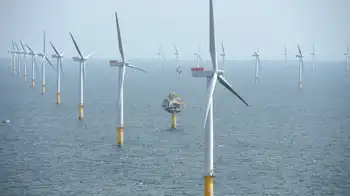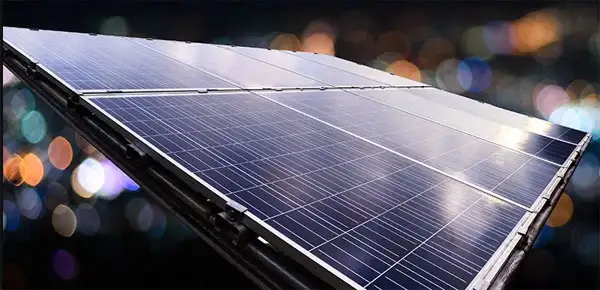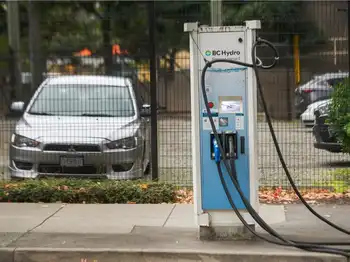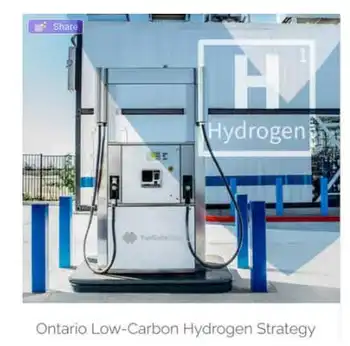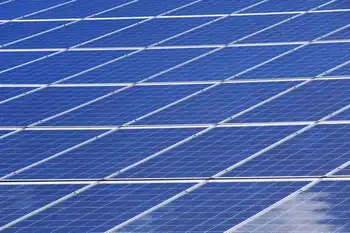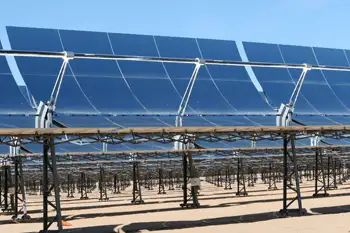Germany Solar Boom is accelerating amid energy security pressures, with photovoltaic capacity surging as renewables displace gas. Policy incentives, grid upgrades, and storage, plus agrivoltaics and rooftop systems, position solar as cornerstone of decarbonization.
Key Points
Germany Solar Boom is rapid PV growth enhancing energy security, cutting emissions, and expanding domestic, low-carbon electricity.
✅ Targets 250 GW PV by 2032 to meet rising electricity demand.
✅ Rooftop, agrivoltaics, and BIPV reduce land use and grid stress.
✅ Diversifies supply chains beyond China; boosts storage and flexibility.
Europe is in crisis mode. Climate change, increasing demand for energy, the war in Ukraine and Russia's subsequent throttling of oil and gas deliveries have pushed the continent into a new era.
Germany has been trapped in a corner. The country relies heavily on cheap imported natural gas to run its industries. Some power plants also use gas to produce electricity. Finding enough substitutes quickly is nearly impossible.
Ideas to prevent a looming power crisis in Germany have ranged from reducing demand to keeping nuclear power plants online past their official closing date at the end of the year. Large wind turbines are doing their part, but many people don't want them in their backyard.
Green activists have long believed renewable energies are the answer to keeping the lights on. But building up these capabilities takes time. Now many experts once again see solar power as a shining light at the end of the tunnel, as global renewables set fresh records worldwide. Some say a solar boom is in the making.
Before the war in Ukraine put energy security at the forefront, the new German government had already pledged that renewable sources — wind and solar — would make up 80% of electricity production by 2030 instead of 42% today. By 2035, electricity generation should be carbon neutral.
It is an ambitious plan, but the country seems to be on its way. July was the third month in a row when solar power output soared to a record level, trade publication pv magazine reported, and clean energy's share reached about 50% in Germany according to recent assessments. For the month, photovoltaic (PV) systems generated 8.23 terawatt hours of power, around a fifth of net electricity production. They were only behind lignite-fired power plants, which brought in nearly 22% of net production.
Solar cells hanging on a modular solar house during the Solar Decathlon Europe in Wuppertal, Germany
Solar panels can come in many different shapes and sizes, and be used in many different ways
Last year, Germany added more than 5 gigawatts of solar power capacity, 10% more than in 2020. That took the total solar power capacity to 59 gigawatts, overtaking installed onshore wind power capacity in Germany, pv magazine said in January. Last year's solar production was about 9% of gross electricity consumption, according to Harry Wirth, who is head of photovoltaic modules and power plant research at the Fraunhofer Institute for Solar Energy Systems in Freiburg.
"For 2032, the government target is around 250 gigawatts of solar energy. According to their estimates, electricity consumption will increase to 715 terawatt hours by 2030," Wirth told DW. A different study by consultancy McKinsey says this is the lower limit. "So if we assume 730 terawatt hours for 2032, we would be at around 30% photovoltaic electricity in gross electricity consumption," he added.
The energy expert also envisions great potential to install more solar panels without taking up valuable land. Besides adding them on top of parking garages or buildings, photovoltaic parts can be integrated into the exterior of buildings or even on the outside of e-vehicles. This would "not only produce electricity on surfaces already in use, but it would also create synergies in its own application," said Wirth.
Foreign investment in German solar
It is not just researchers that are taking note. Big businesses are stepping in too. In July, Portuguese clean energy firm EDP Renovaveis (EDPR) announced it had agreed to take a 70% interest in Germany's Kronos Solar Projects, a solar developer, for €250 million ($254 million).
The Munich-based company has a portfolio of 9.4 gigawatts of solar projects in different stages of development in Germany, France, the Netherlands and the UK, according to the press release announcing the purchase. Germany represents close to 50% of the acquired solar portfolio.
EDPR, which claims to be the fourth-largest renewable energy producer worldwide, said it generated 17.8 terawatt hours of clean energy in the first half of 2022.
Miguel Stilwell d'Andrade, chief executive of EDPR and its parent EDP, said they have great expectations from Germany in particular as "it is a key market in Europe with reinforced renewable growth targets."
Fabian Karthaus is one of the first farmers in Germany to grow raspberries and blueberries under photovoltaic panels. His solar field near the city of Paderborn in northwestern Germany is 0.4 hectares (about 1 acre), but he would like to expand it to 10. He could then generate enough electricity for around 4,000 households — and provide more berries for supermarkets.
Germany was once a leader in solar power. For many years the country enjoyed a large share of the world's total solar capacities. A lot of that early success had to do with innovative government support. That support, however, proved too successful for some as a fall in wholesale electricity prices in Northern Europe hurt the profits of power companies, leading to calls for a change in the rules.
Updated regulations, and changes to the Renewable Energy Sources Act that reduced feed-in tariffs slowed things down. Feed-in tariffs usually grant long-term grid access and above-market price guarantees in an effort to support fledgling industries.
With less direct financial incentives, the industry was neglected leaving it open for competitors. The pace of solar infrastructure growth has also been hampered by issues of red tape, supply chain backlogs, a lack of skilled technicians and, despite solar-plus-storage now undercutting conventional power in Germany, a shortage of storage for electricity produced when it is not needed.
Now the war in Ukraine and Europe's dependency on Russia is refocusing efforts and "will strengthen the determination for an ambitious PV expansion," said Wirth. But the biggest challenge to the region's solar industry remains China.
Public buildings can play a big role, not just because of their size, but because the government is in charge of them
An overreliance on China
China took an early interest in photovoltaic technology and soon galloped past countries like the US, Japan and Germany thanks to huge state subsidies that manufacturers enjoyed. Today, it has become the place to go for all things solar, even as Europe turns to US solar equipment suppliers to diversify procurement.
A new report from the International Energy Agency puts it into numbers. "China has invested over $50 billion in new PV supply capacity — 10 times more than Europe — and created more than 300,000 manufacturing jobs across the solar PV value chain since 2011."
Today China has over 80% of all solar panel manufacturing capacity and is home to the top-10 suppliers of photovoltaic manufacturing equipment. Such a high concentration has led to some incredible realities, like the fact that "one out of every seven panels produced worldwide is manufactured by a single facility," according to the report.
These economies of scale have brought down costs, and the country can make solar components 35% cheaper than in Europe. This gives China outsized power and makes the industry susceptible to supply chain bottlenecks. To diversify the industry and get back some of this market, Europe needs to invest in innovation and make solar growth a top priority.
Germany has several high-tech photovoltaic manufacturers and research institutes. But it only has one manufacturer of solar cells specializing in high-performance heterojunction technology, says Wirth. Yet even though the European photovoltaic industry is fragmented and not what it once was, he is still counting on big demand for solar technology in the foreseeable future, with markets like Poland accelerating adoption across the region.
Related News
